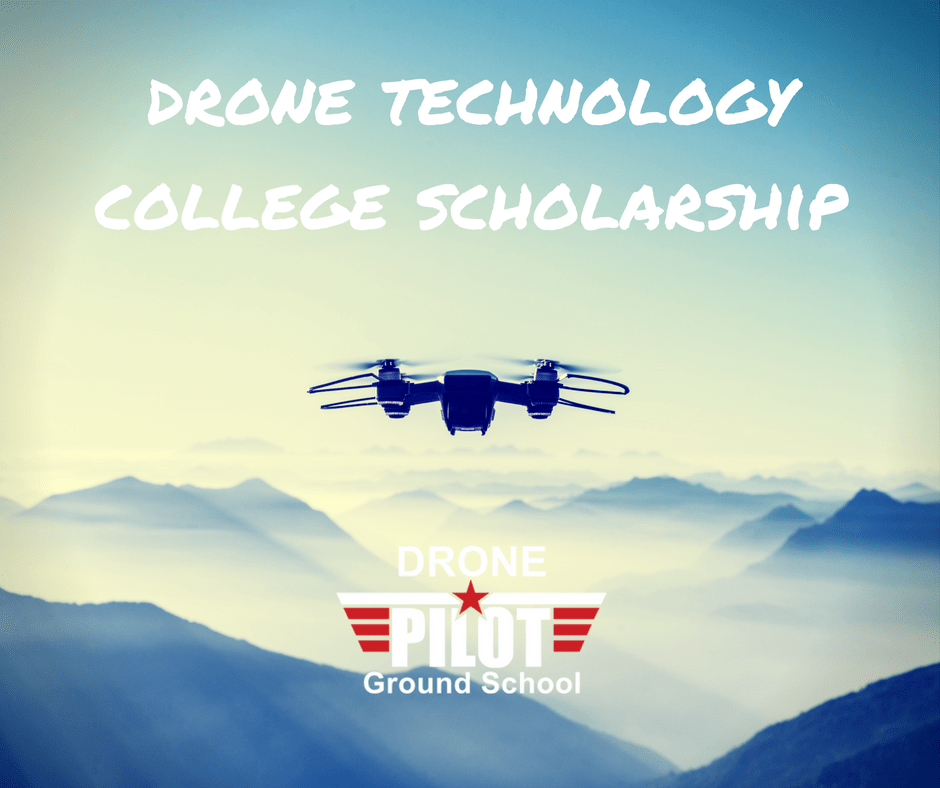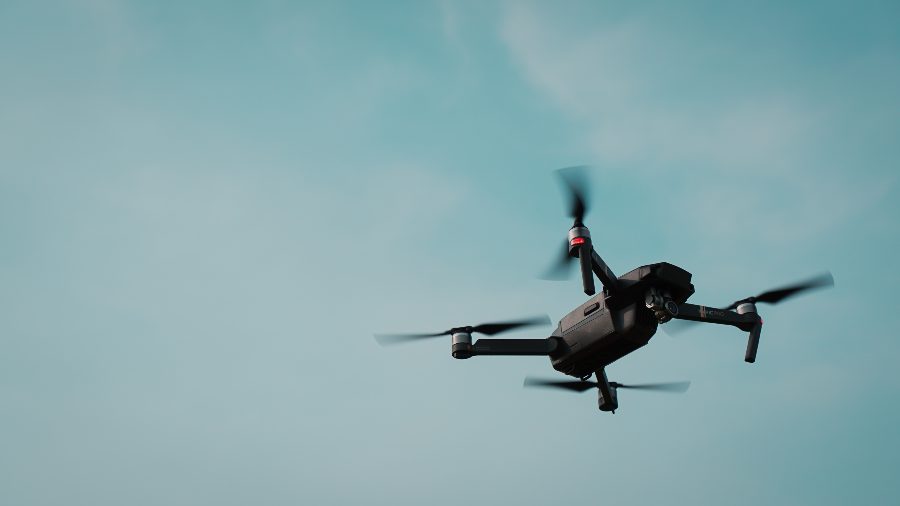Meet the Two Winners of Our 2022 Drone Technology College Scholarship
BY Zacc Dukowitz
21 June 2022We are pleased to announce the two winners of our fifth annual Drone Technology College Scholarship, a scholarship we launched in 2018 to provide financial support to college students who demonstrate an interest in pushing the drone industry forward.
Each scholarship winner will receive $1,000 to support their college studies. Scroll down to meet the winners and read their award-winning essays.
[Did you know? We also offer scholarships for high school students that provide free access to Drone Pilot Ground School to help students prepare for the Part 107 test and cover the $175 FAA exam fee.]

Our 2022 Drone Technology College Scholarship Winners
Drone Pilot Ground School’s Drone Technology College Scholarship is for current or rising college students who demonstrate an interest in pushing the drone industry forward. High school seniors are eligible to apply.
Scholarship winners are selected based primarily on the quality of their essays.
Here are the three essay topics applicants had to choose from this year:
- How Drones Can Be Used to Do Good
- How Drones Will Change Our World Over the Next Ten Years
- How Drones Can Be Used for STEM Education
Now let’s get to the winners!
Anjali Zope
Essay Topic: How Drones Can Be Used to Do Good
Emery Chandler
Essay Topic: How Drones Will Change Our World Over the Next Ten Years
When I was growing up in the 1990s I was always fascinated by RC airplanes. I watched an RC B-29 drop a rocket-powered model of the X-1, and I saw someone use an RC B-25 to drop candy out of the storage bay. It made my imagination run wild seeing these things. A decade later in my teen years, I watched the DIY drone movement kick off. I became fascinated by the drone movement and even drafted up my own ideas. As time has gone on the world changed, so did the technology, and so did the needs. These things continue to change naturally. So how will drones change the world in the next ten years? I believe there are three key areas things will change: meteorological research and monitoring; middle-mile logistics; and artificial intelligence fielding.
Meteorological Research & Monitoring
In the last few years, a rather famous storm-chaser and avid meteorological scientist by the name of Reed Timmer began using drones and rocket launched sensors to track, intercept, and gather data on tornadoes and severe thunderstorms. Earlier in May, he used a pro-consumer drone to track a violent tornado as it went through a town. Later a specialized computer program processed the video and identified debris and calculated wind flow around the tornado. This revealed negative pressure and damage extent levels from buildings that did not take a direct hit. The information this reveals about tornados is incredibly useful. It also gives us insight into architectural designs that will better assist homes to withstand storm damage. This insight can be used to save lives and assist the economy as we also increase our understanding of these violent weather phenomena. As we move forward, I suspect we will see more instances of drones changing the world through rapid deployment against fast-acting storms and weather events.
Another impact is drone-in-the-box solutions to weather monitoring and forecasting. Currently, weather forecasts interpolate temperature, moisture, and risk forecasts across regions. When fixed drone-in-the-box solutions are put in key places, in each city across a region, the data the forecasters are using to monitor or project has a higher accuracy. This allows for more accurate weather reporting and more understanding of day-to-day regional weather trends. The impacts of this could be huge for farmers, pilots, and emergency services.
Middle-Mile Logistics
Drone delivery has been a heavily pursued solution, with the focus on last-mile delivery and mass delivery to individual consumers. This concept places the burden at the end of the logistical supply chain. I foresee the most successful strategy employing middle-mile logistical transport. For example, Japan exports car parts to the United States via ship, which then goes to port and then waits to be trucked across the US. A revolutionary change that could impact the entire world supply chain is conducting flights with large transport drones to key cities across the world. If one took the United States and Japan in the previous example, a series of large cargo drones can take car parts and go to airports that have been modified as ports of entry. From there last-mile delivery can occur. This removes the burden on existing ports of entry typically located along the coastlines of nations or borders. It also loosens the already overloaded sea shipping and understaffed trucking industries. This would allow a faster flow of goods worldwide! Another use for this strategy is the movement of aid after disasters. This strategy would be revolutionary and would change the world!
Artificial Intelligence Fielding
In the late 1990s when the Predator was first fielded, the unclassified specs listed it as a level two autonomous aircraft, maybe two-plus. Today, most pro-consumer drones operate at level two autonomy. Historically, drones, robotics, and very similar space systems have driven the development of artificial intelligence. So much so that it leaked into the automobile industry. Per online news sources and public announcements from the US Air Force, a company called “Kratos” has developed drones that interlink and communicate with manned and unmanned aircraft. It allows for teaming while the overarching AI learns from the different platforms and environments. Outside of the military, multiple universities and agencies have been working on AI-driven teaming of drones to navigate forests to look for lost hikers. While there are ethical questions about AI being used in war, the development of AI from drones offers a lot for humanity. As these different AI programs are created for drones, we also find usage for them in other things. One such example takes us back to the automobile industry. Self-driving trucks solve a dull job but it needs a more developed AI to solve the collision avoidance issue. Then dynamic environment navigation requires an advanced AI and computing power, which has progressed thanks to drone technology. In the next 10 years, this will likely have the same impact cars, airplanes, or computers made for the world. By definition alone, it would revolutionize the cultural and social dynamics of the world.
As we look forward to the impact drones will have on the world, we must remember perseverance is key when developing technological capabilities. Drones offer many great solutions to the problems humanity faces. My personal belief is that the coming impacts of drone use in meteorology, middle-mile logistics, and artificial intelligence fielding would likely be the most revolutionary in terms of global impact. I look forward to being part of that force that changes the world. I am eager to use both of my degrees to further advance drone technology and use across the world.
Bio
My name is Emery Charles Chandler. I am 29 years old, and I grew up in Temple Texas.
I was into the DIY drone movement before DJI was a big thing. I grew up in a low-income household that had some real issues. So, I didnʼt get to pursue drone building the way I wish I could have back then. However, I avowed that I would make it my lifeʼs work and would go to college to pursue it. I got a conditional college acceptance to Embry-Riddle Aeronautical University in 2012 shortly before graduating high school. The first thing my parents said was, “Thatʼs great son but how are you going to pay for it?”
This led me to create some type of plan that would bring me to that point. I went through plan A, plan A1, plan A2, B, B1, etc. I ultimately landed on Plan K, which saw me enlisting into the Air Force. I became an Armament Technician for an F-22 test unit at Nellis AFB. This expanded my knowledge on electronics, flight capabilities, and sensor packages. I took this knowledge and experience with me when I began my studies at Embry-Riddle, joining the UAS degree program. I have done well in this program; I landed a job in the UAS Laboratory, and I have been on the Deanʼs List five different times with a cumulative GPA of 3.7. While in college I have continued military service with the Air Force Reserves. I also received my Associates degree from the Air Force in Aircraft Armament Systems Technology during this time. Throughout these last few years my wife has been my number one supporter in all of this. Both her and I are incredibly excited that my graduation date is May 2023, almost exactly a decade after Plan K was devised and undertaken.




